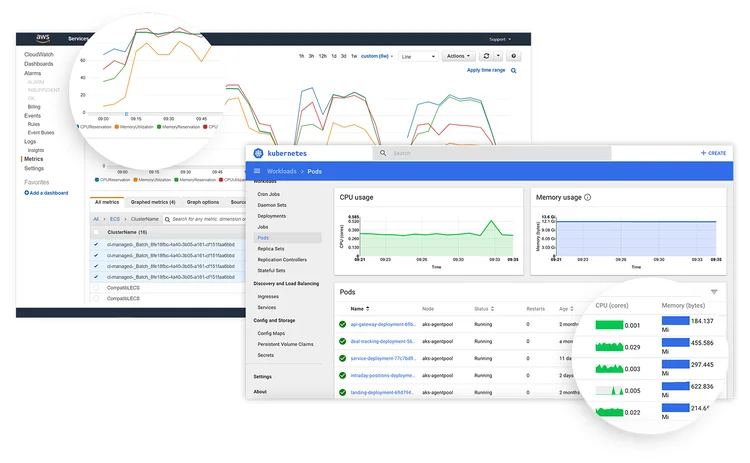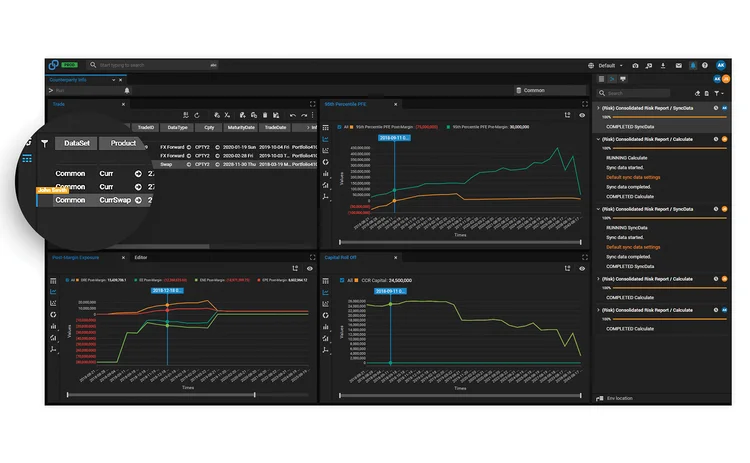
This article was paid for by a contributing third party.More Information.
Successfully moving risk software to the cloud

Cloud technologies offer numerous benefits over traditional on-premise deployments. While the rate of adoption in the financial services industry was initially slow, banks and asset managers are now embracing these technologies and moving their enterprise applications to the cloud. CompatibL Technologies describes its experience of leveraging the latest serverless technologies for its enterprise risk application
Building new architecture versus moving existing on-premise architecture to the cloud
Migrating a mature enterprise software package to the cloud is a formidable challenge. A complex project with tough deadlines and budget limitations often causes a project’s leadership to take the path of least resistance and simply transplant existing software architecture to the cloud by relying on the Infrastructure-as-a-Service (IaaS) offering of their cloud provider. This option results in migrating the application by merely creating its mirror image in the cloud, with each on-premise server migrated to its virtualised cloud counterpart. This approach requires few changes in the software itself for the migration.
In the long run, this deprives organisations of the tremendous value and potential of true cloud technologies such as Docker, Kubernetes, Amazon Web Services (AWS), and Lambda, Fargate, Step and Azure functions. The advantages of true cloud technologies include lower development and operating costs – due to the use-based billing model of the serverless cloud – and superior scalability and flexibility.
By implementing serverless cloud technologies, CompatibL was able to reduce the infrastructure cost of CompatibL Risk Cloud deployment in the AWS cloud by an average of 62%, and in the Azure cloud by an average of 72% compared with deploying the same application in an on-premise data centre. This cost advantage was made possible by leveraging true serverless cloud technologies rather than running the existing application on virtualised servers.

Adapting to the central processing unit (CPU)-heavy requirements of enterprise risk
Most cloud architecture solutions are designed for a set of standard performance requirements that are very different from the unique performance requirements of enterprise risk management.
A typical cloud application has moderate CPU or random access memory (RAM) requirements and can run with each virtual CPU (vCPU) supporting a large number of concurrent users without running into performance limitations. In enterprise risk management, most calculations are CPU- and RAM-intensive. The cloud architect must consider the limitations to popular cloud technologies that may be triggered by running such loads.
For example, each AWS Lambda calculation is limited to15 minutes – there are limits to how many vCPUs an AWS Fargate run can use, and the list of limitations unfamiliar to software engineers with on-premises-only experience goes on and on. These limitations must be addressed when moving from an on-premise enterprise risk application that performs a single, long calculation on a manycore server to a cloud architecture where each element of the calculation is limited in the time it takes to run and the number of vCPUs it can use.
User collaboration in the cloud
With typical cloud applications, there is no need to share query or calculation results between users –the application performs each query or calculation anew because the overhead costs of storing the results exceed that of repeating the call to the function that produces them.
In enterprise risk, using the application is a collaborative process, and multiple users can work together to produce or analyse the same complex, CPU-intensive reports. In a well-designed enterprise risk cloud application, users can view each other’s progress and share their settings and results easily. An effective and easy-to-use multi-user mode helps reduce the cost of running enterprise risk in the cloud through more effective collaboration and data sharing.

Summary
Migrating to the cloud entails much more than moving existing on-premise applications to virtualised servers hosted by cloud IaaS providers. Only by embracing true serverless cloud technologies can firms leverage the full benefits of the cloud in reducing the development and operational costs of enterprise risk.
Read the Q&A on cloud adoption with Siarhei Niaborski, executive vice-president of risk at CompatibL, Seamless integration – Drivers of and barriers to cloud adoption
Sponsored content
Copyright Infopro Digital Limited. All rights reserved.
As outlined in our terms and conditions, https://www.infopro-digital.com/terms-and-conditions/subscriptions/ (point 2.4), printing is limited to a single copy.
If you would like to purchase additional rights please email info@risk.net
Copyright Infopro Digital Limited. All rights reserved.
You may share this content using our article tools. As outlined in our terms and conditions, https://www.infopro-digital.com/terms-and-conditions/subscriptions/ (clause 2.4), an Authorised User may only make one copy of the materials for their own personal use. You must also comply with the restrictions in clause 2.5.
If you would like to purchase additional rights please email info@risk.net
